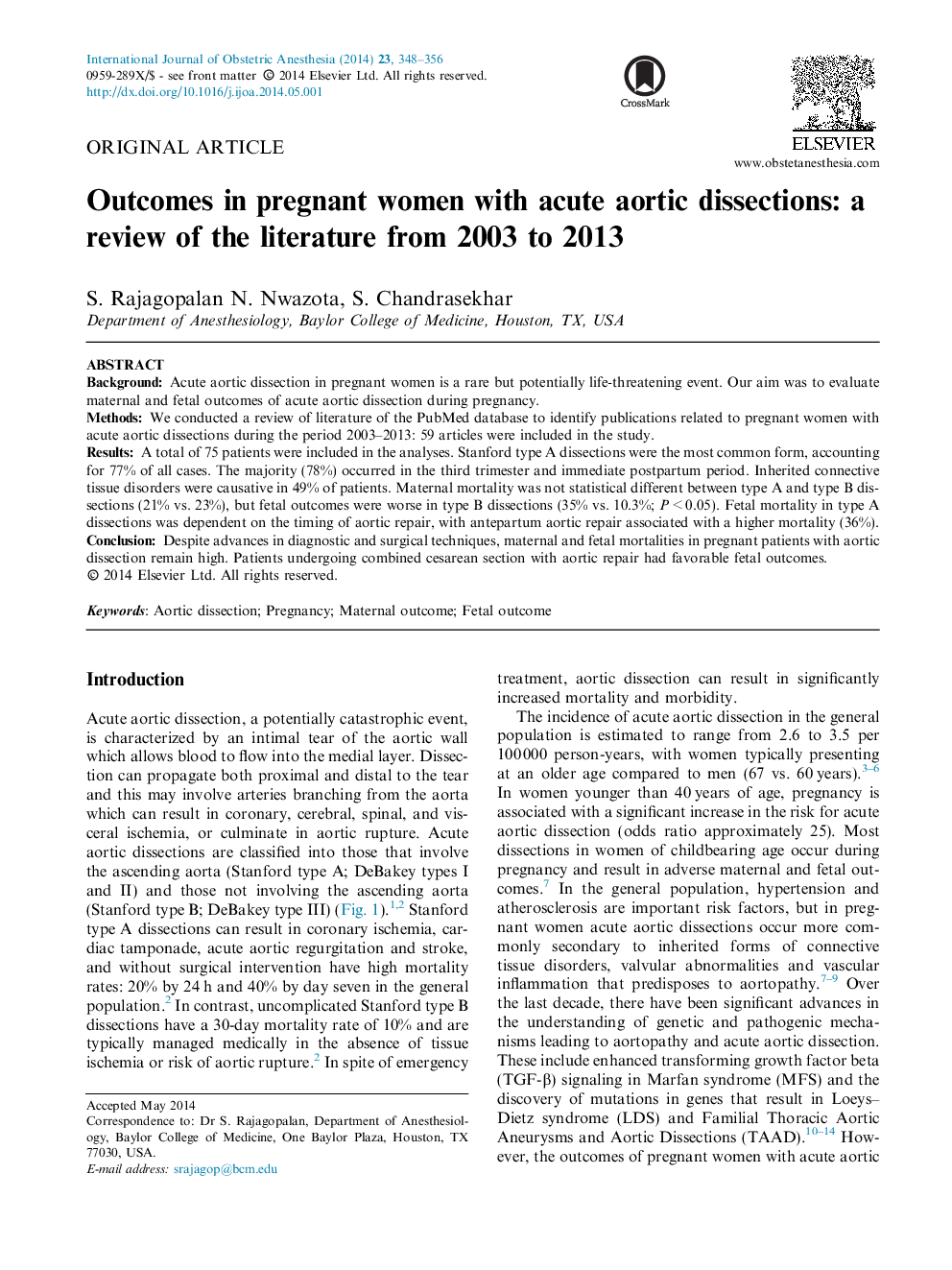| Article ID | Journal | Published Year | Pages | File Type |
|---|---|---|---|---|
| 2757696 | International Journal of Obstetric Anesthesia | 2014 | 9 Pages |
•We conducted a literature review to look at outcomes in 75 pregnant women with acute aortic dissection from 2003 to 2013.•Stanford type A dissections were the most common with 78% occurring in the third trimester and immediate postpartum period.•Heritable connective tissue disorders were identified to be the cause in 49%.•Maternal mortality was 21%.•Fetal mortality was worse in type B dissection (35%).
BackgroundAcute aortic dissection in pregnant women is a rare but potentially life-threatening event. Our aim was to evaluate maternal and fetal outcomes of acute aortic dissection during pregnancy.MethodsWe conducted a review of literature of the PubMed database to identify publications related to pregnant women with acute aortic dissections during the period 2003–2013: 59 articles were included in the study.ResultsA total of 75 patients were included in the analyses. Stanford type A dissections were the most common form, accounting for 77% of all cases. The majority (78%) occurred in the third trimester and immediate postpartum period. Inherited connective tissue disorders were causative in 49% of patients. Maternal mortality was not statistical different between type A and type B dissections (21% vs. 23%), but fetal outcomes were worse in type B dissections (35% vs. 10.3%; P < 0.05). Fetal mortality in type A dissections was dependent on the timing of aortic repair, with antepartum aortic repair associated with a higher mortality (36%).ConclusionDespite advances in diagnostic and surgical techniques, maternal and fetal mortalities in pregnant patients with aortic dissection remain high. Patients undergoing combined cesarean section with aortic repair had favorable fetal outcomes.
